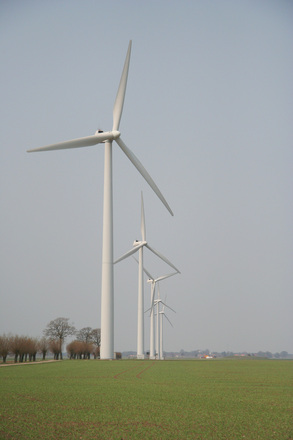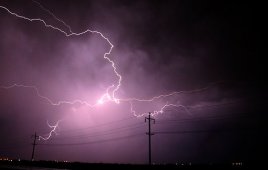
GCube has developed a weather risk hedging device to help with market uncertainty in the wind industry.
GCube, an underwriter for renewable energy initiatives, has launched a new Weather Risk Transfer device for the wind and hydroelectric energy sectors, providing project owners and stakeholders with a means to mitigate the financial impact of resource volatility.
While intermittency is a given for the renewables sector, as the proportion of clean energy generation in the global energy mix continues to grow, so does the financial and supply risk posed by the inherent volatility of the resources that make it possible. This risk affects not only renewable energy producers, but also an ever-increasing number of players throughout the value chain – from developers, installers, and independent power producers to utilities, pension funds, and national governments.
A number of recent high-profile anomalies in established wind and hydroelectric markets have raised industry awareness of the impact of extraordinary weather patterns on long and short-term project performance and profitability. This year, many utilities and operators in the U.S. wind market felt the performance impact of the lowest Q1 wind speeds since records began. Low wind speeds are also set to continue throughout the remainder of 2015.
Concurrently, long-term drought and low rainfall conditions in Uruguay and Brazil have hampered hydroelectric production and forced national governments to turn to costly spot market power.
For individual companies, such fluctuations lead to unstable cash flows that can affect enterprise value and deter potential capital providers seeking low risk and steady returns. When portfolios are affected by wide-ranging anomalous weather patterns, investor confidence is quickly undermined.
Increasingly, this uncertainty has encouraged wind and hydroelectric generators to seek alternative methods of smoothing profitability involving the transfer of weather risk to a third party. Many are now looking to do so by means of a financial hedge, a mechanism that offers compensation in the event of below par resource availability. In return for an insurance premium, hedges guarantee a floor on financial performance and help to unlock additional value for projects and their stakeholders.
However, while weather risk hedging is common practice in a number of weather-affected industries, it has not yet been adopted on the same scale in the renewable energy sector due to a lack of reliable performance and weather data and the subsequent difficulty of providing upfront pricing estimates for the potential buyer.
The Weather Risk Transfer mechanism includes benefits from a marked increase in the availability of high-quality third-party weather data in the market, and from a unique rating model that allows GCube to provide an early indication of pricing.
The Weather Risk Transfer contract is customized in each case to the buyer’s specific needs and weather risk exposure. Each contract is settled on the basis of weather data collected by a third-party from an agreed source close to the location of the buyer’s exposure. A contract period is then agreed with the buyer, alongside an agreed weather variable such as wind speed or river flow. GCube then uses historical weather data to create a suitable index and index trigger, which determines when payment to the buyer occurs (for example, when wind speeds fall below 70% of the calculated long-term average).
The buyer then specifies a notional payment that it wants to receive per index unit – ranging from hundreds of thousands to hundreds of millions of U.S. dollars, or other agreed currency. Payment is due to the buyer if the index trigger is breached, proportional to the departure from the trigger.
“Weather risk exposure is simultaneously an issue for the wind and hydroelectric industries at large and a project-specific concern for individual operators,” said Charlie Richardson, Senior Underwriter, GCube Underwriting Ltd.
“That’s why each hedge contract and its delivery mechanism needs to be tailored specifically to the buyer’s needs, on the basis of reliable local data.”
“Now that this data has become more widely available, we are able to start offering investors and project stakeholders in the wind and hydroelectric energy sectors a means of managing underperformance and its associated financial risk. This will bring about smooth profitability and, ultimately, encourage fresh investment into the market.”
GCube
www.gcube-insurance.com
Filed Under: Insurance




